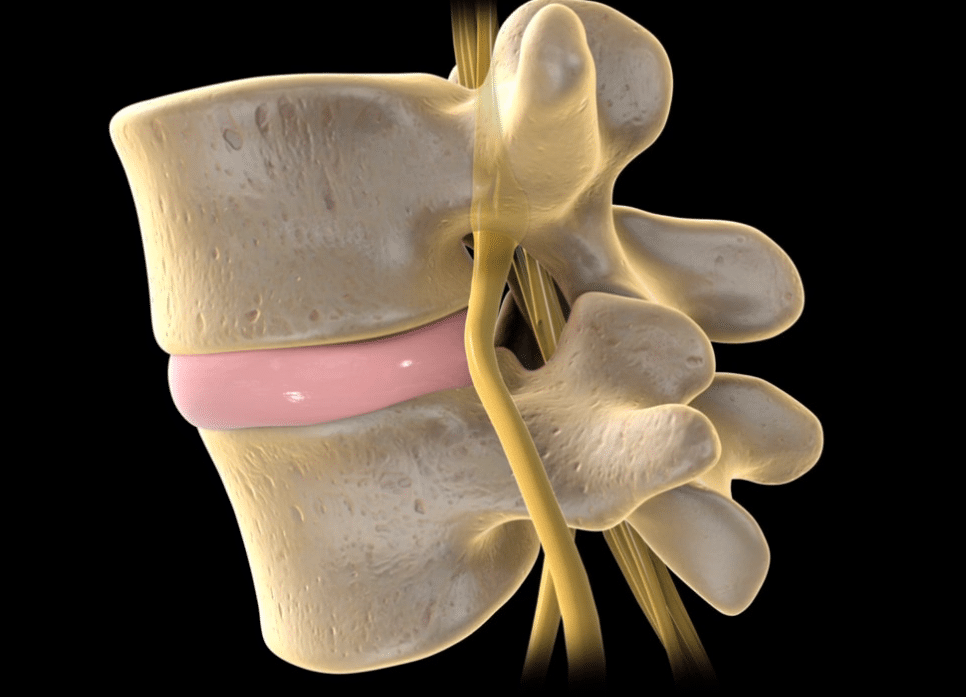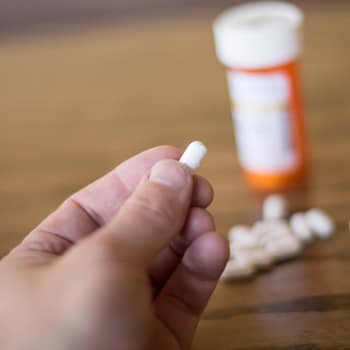Putting Pressure on Opioid Prescribing: Novel Approaches to Pain Management
 Opioids continue to impact all corners of the United States and its communities, a burden that continues to grow at a rapid pace. The current opioid crisis is incredibly challenging for both patients and health care providers (HCPs). There has been a 30% increase in overdoses among men and a 24% increase among women, with all ages affected. While changing these current trends is important, it cannot be accomplished by policy changes alone. There is no one size fits all model for communities to address this crisis.
Opioids continue to impact all corners of the United States and its communities, a burden that continues to grow at a rapid pace. The current opioid crisis is incredibly challenging for both patients and health care providers (HCPs). There has been a 30% increase in overdoses among men and a 24% increase among women, with all ages affected. While changing these current trends is important, it cannot be accomplished by policy changes alone. There is no one size fits all model for communities to address this crisis.[themo_button text=”Register Now” url=”https://www.cmeoutfitters.com/transfers/cm/?ID=28516″ type=”standard” target=”_blank”]
Addressing the Opioid Epidemic: A Call to Action to Save Our Communities
 Join Dr. Gold and Dr. Stanos in augmented reality illustration of pain management strategies to optimize safe and responsible management of acute and chronic pain.
Join Dr. Gold and Dr. Stanos in augmented reality illustration of pain management strategies to optimize safe and responsible management of acute and chronic pain.
[themo_button text=”Participate Now” url=”https://www.cmeoutfitters.com/wp-content/uploads/MM090SCORM/res/” type=”standard” target=”_blank”]
Understanding the Big Picture of Pain and Pain Assessment
 The key to pain management is helping patients function better so that they can return to doing the things they enjoy. In this CME Snack, expert faculty discuss pain assessment tools and risk stratification so that clinicians can work together with patients to restore function and improve quality of life.
The key to pain management is helping patients function better so that they can return to doing the things they enjoy. In this CME Snack, expert faculty discuss pain assessment tools and risk stratification so that clinicians can work together with patients to restore function and improve quality of life.
[themo_button text=”Participate Now” url=”https://www.cmeoutfitters.com/wp-content/uploads/28478/res/” type=”standard” target=”_blank”]
Providing the Right Expectations: Understanding the Pathophysiology of Pain  Evaluating patients with chronic pain can be a daunting task, as the nervous system is complex and knowing which type of pain the patient is experiencing – neuropathic, nociceptive, or nociplastic – is the best guide for where clinicians should focus their treatment decisions. In this CME Snack on understanding and treating pain, expert faculty focus on the pathophysiology of pain and the underlying mechanisms to assessment and appropriate management.
Evaluating patients with chronic pain can be a daunting task, as the nervous system is complex and knowing which type of pain the patient is experiencing – neuropathic, nociceptive, or nociplastic – is the best guide for where clinicians should focus their treatment decisions. In this CME Snack on understanding and treating pain, expert faculty focus on the pathophysiology of pain and the underlying mechanisms to assessment and appropriate management.
[themo_button text=”Participate Now” url=”https://www.cmeoutfitters.com/wp-content/uploads/28479/res/” type=”standard” target=”_blank”]
The Role that Gender Plays in Pain Perception, Treatment, and Addiction  Gender plays an important role in pain, pain reception, and opioid use. In this CME Snack, expert faculty discuss how gender and sexual trauma and/or abuse affects a patient’s proclivity to substance abuse disorders.
Gender plays an important role in pain, pain reception, and opioid use. In this CME Snack, expert faculty discuss how gender and sexual trauma and/or abuse affects a patient’s proclivity to substance abuse disorders.
[themo_button text=”Participate Now” url=”https://www.cmeoutfitters.com/wp-content/uploads/28480/res/” type=”standard” target=”_blank”]
Shifting Perspectives on Pain Management in Oral Surgery  In a survey of 1,015,116 opioid naïve patients undergoing surgery, total duration of opioid use was the strongest predictor of misuse and the greatest risk for individuals in the 15-24 age group. Young people aged 15-24 often get their first exposure to opioids with dental surgery. In a survey of randomly selected oral surgeons conducted by Dr. Abubaker and colleagues, the average number of opioid tablets prescribed was 20, with 22% prescribing more than 20 tablets, and 11% prescribing more than 30 tablets. These risk factors, combined with the current epidemic, has led many oral surgeons to believe that the old standards of depending on opioids as a first-line treatment should be a thing of the past. In this free CME Snack, Dr. Gold and Dr. Abubaker share insights on alternative pain management strategies for oral pain with a focus on finding a balance between compassion for patient care and patient safety.
In a survey of 1,015,116 opioid naïve patients undergoing surgery, total duration of opioid use was the strongest predictor of misuse and the greatest risk for individuals in the 15-24 age group. Young people aged 15-24 often get their first exposure to opioids with dental surgery. In a survey of randomly selected oral surgeons conducted by Dr. Abubaker and colleagues, the average number of opioid tablets prescribed was 20, with 22% prescribing more than 20 tablets, and 11% prescribing more than 30 tablets. These risk factors, combined with the current epidemic, has led many oral surgeons to believe that the old standards of depending on opioids as a first-line treatment should be a thing of the past. In this free CME Snack, Dr. Gold and Dr. Abubaker share insights on alternative pain management strategies for oral pain with a focus on finding a balance between compassion for patient care and patient safety.
[themo_button text=”Participate Now” url=”https://www.cmeoutfitters.com/wp-content/uploads/28481/res/” type=”standard” target=”_blank”]
How PAs are Improving Skill Sets to Approach Opioid Use 
Managing the Complexity of Chronic Pain in the Primary Care Setting
 Primary care physicians can play a key role in making a difference in the opioid epidemic. PCPs are responsible for approximately 50% of opioid prescriptions and need to incorporate best practice strategies to optimize safe and competent prescribing, therefore minimizing potential for abuse and diversion. Although chronic pain is not something a physician can cure, if the patient feels understood and heard treatment will be more successful. This CME Snack focuses on the complexity of chronic pain and how best to manage it in a primary care setting, with expert faculty discussing how PCPs and their patients can make informed decisions together.
Primary care physicians can play a key role in making a difference in the opioid epidemic. PCPs are responsible for approximately 50% of opioid prescriptions and need to incorporate best practice strategies to optimize safe and competent prescribing, therefore minimizing potential for abuse and diversion. Although chronic pain is not something a physician can cure, if the patient feels understood and heard treatment will be more successful. This CME Snack focuses on the complexity of chronic pain and how best to manage it in a primary care setting, with expert faculty discussing how PCPs and their patients can make informed decisions together.[themo_button text=”Participate Now” url=”https://www.cmeoutfitters.com/wp-content/uploads/28490/res/” type=”standard” target=”_blank”]
New Perspectives and Approaches from Orthopedic Surgeons for the Management of Acute Pain
 In light of the current opioid crisis, many states have put forward prescribing mandates and limits for opioids, clinical practice guidelines can provide guidance for treatment decisions for acute pain in the management of minor to major musculoskeletal injuries. In this CME Snack, expert faculty discuss non-opioid approaches to acute pain and the new Orthopaedic Trauma Association (OTA) Clinical Practice Guidelines for Acute Pain Management. Download the OTA Clinical Practice Guidelines for Acute Pain Management
In light of the current opioid crisis, many states have put forward prescribing mandates and limits for opioids, clinical practice guidelines can provide guidance for treatment decisions for acute pain in the management of minor to major musculoskeletal injuries. In this CME Snack, expert faculty discuss non-opioid approaches to acute pain and the new Orthopaedic Trauma Association (OTA) Clinical Practice Guidelines for Acute Pain Management. Download the OTA Clinical Practice Guidelines for Acute Pain Management[themo_button text=”Participate Now” url=”https://www.cmeoutfitters.com/wp-content/uploads/28491/res/” type=”standard” target=”_blank”]
Fatal Attraction: Why are Opioids so Addicting?
 Early in the opioid crisis, physicians were the principle source of opioid use and abuse due to overprescribing, often leading to patients storing leftover prescriptions at home and friends or family members finding and using these leftovers. Unfortunately, simply restricting opioid prescriptions is not an effective strategy in a culture that has wildly available and accessible drugs of abuse available. In this CME Snack, Dr. Mark S. Gold focuses on the biological underpinnings of opioid addiction in order to educate clinicians on how to address the opioid epidemic in their communities.
Early in the opioid crisis, physicians were the principle source of opioid use and abuse due to overprescribing, often leading to patients storing leftover prescriptions at home and friends or family members finding and using these leftovers. Unfortunately, simply restricting opioid prescriptions is not an effective strategy in a culture that has wildly available and accessible drugs of abuse available. In this CME Snack, Dr. Mark S. Gold focuses on the biological underpinnings of opioid addiction in order to educate clinicians on how to address the opioid epidemic in their communities.[themo_button text=”Participate Now” url=”https://www.cmeoutfitters.com/wp-content/uploads/28492/res/” type=”standard” target=”_blank”]
Opioid Use Disorder in Special Populations: Making Recovery a Goal 
[themo_button text=”Participate Now” url=”https://www.cmeoutfitters.com/wp-content/uploads/28426/” type=”standard” target=”_blank”]
SMART Goals: The Science & Art of Meeting the Needs of Patients in Pain

Treating Incarcerated Individuals with OUD
Most individuals do not receive treatment for their opioid use disorder when incarcerated resulting in significant rates of relapse, overdose, and death upon release. Dr. Tobias Wasser discusses barriers and opportunities for treatment in correctional facilities. Download Slides Here – PDF
Comprehensive Opioid Addiction Treatment (COAT)
Dr. James Berry has created an innovative and effective group-based, and step-based opioid addiction program at West Virginia University. COAT combined medical management with psychosocial treatment. Their results have been impressive.
Learn the top takeaways from this activity, “Opioid Use Disorder in Special Populations: Making Recovery a Goal”

Understanding Pain and Addiction An Animated Look at Acute and Chronic Pain Pathways – Download the Animation Guide here (PDF)
Understanding the Different Types of Pain: An Augmented Reality Experience
Understanding the Addicted Brain: An Augmented Reality Experience

From Analytics to Understanding: A Look Into Our 3D Pain Animation’s Debut at CME Outfitters’ Opioid Epidemic Premiere Symposium  Family medicine providers are uniquely qualified to lead the charge for precise and responsible prescribing for acute and chronic pain. Family medicine is at the forefront of managing chronic illness, handling comorbidities, and coordinating care for their patients. A recent live meeting held at the Pennsylvania Academy of Family Physicians (PAFP) used an animated 3-D model that learners were able to move, rotate, and zoom as they explored acute and chronic pain pathways. [themo_button text=”Learn more in our latest blog” url=”https://www.cmeoutfitters.com/from-analytics-to-understanding-a-look-into-our-3d-pain-animations-debut-at-cme-outfitters-opioid-epidemic-premiere-symposium/” type=”standard” target=”_blank”]
Family medicine providers are uniquely qualified to lead the charge for precise and responsible prescribing for acute and chronic pain. Family medicine is at the forefront of managing chronic illness, handling comorbidities, and coordinating care for their patients. A recent live meeting held at the Pennsylvania Academy of Family Physicians (PAFP) used an animated 3-D model that learners were able to move, rotate, and zoom as they explored acute and chronic pain pathways. [themo_button text=”Learn more in our latest blog” url=”https://www.cmeoutfitters.com/from-analytics-to-understanding-a-look-into-our-3d-pain-animations-debut-at-cme-outfitters-opioid-epidemic-premiere-symposium/” type=”standard” target=”_blank”]
Brainstorming Opioid Addiction through Merged Perspectives: Learnings from Roundtable Discussions  According to the National Institute on Drug Abuse, 115 people die each day in the United States due to an opioid overdose. To better understand the nation’s current epidemic, CME Outfitters recently brought together the perspectives of those most impacted by opioids in hopes of creating more effective strategies to avoid addiction in the coming years. These roundtable discussions, hosted by CME Outfitters, first pulled the experiences of both patients and their loved ones who have been affected by opioid dependency. Read more about the the four key takeaways that we learned. [themo_button text=”Learn more” url=”https://www.cmeoutfitters.com/brainstorming-opioid-addiction-through-merged-perspectives-learnings-from-roundtable-discussions/” type=”standard” target=”_blank”]
According to the National Institute on Drug Abuse, 115 people die each day in the United States due to an opioid overdose. To better understand the nation’s current epidemic, CME Outfitters recently brought together the perspectives of those most impacted by opioids in hopes of creating more effective strategies to avoid addiction in the coming years. These roundtable discussions, hosted by CME Outfitters, first pulled the experiences of both patients and their loved ones who have been affected by opioid dependency. Read more about the the four key takeaways that we learned. [themo_button text=”Learn more” url=”https://www.cmeoutfitters.com/brainstorming-opioid-addiction-through-merged-perspectives-learnings-from-roundtable-discussions/” type=”standard” target=”_blank”]
